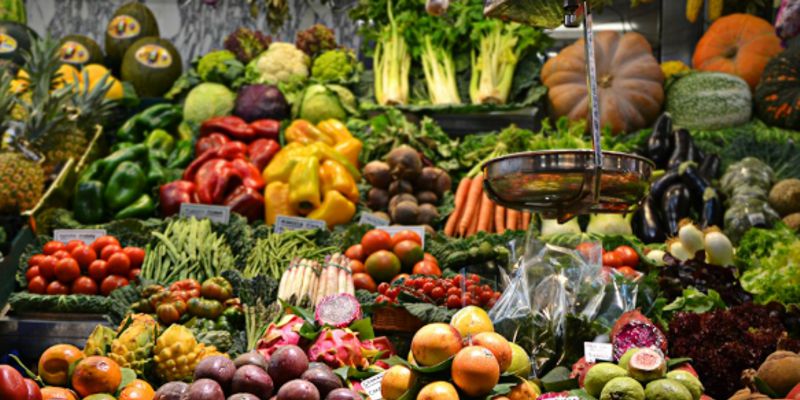The Profit in Produce – Western Grocer

Good margins and growing demand drive sector forward
By Frank Yeo
As consumers’ tastes evolve and environmental concerns grow, the produce industry is preparing for another year of transformation in 2025.
The demand for Canada vegetables and fruits is rising as people become more health conscious and adopt plant-based diets. Fresh, organic, and locally sourced produce is becoming increasingly common among consumers, owing to increased awareness of the health advantages of fruits and vegetables. The market size surpass USD 14.07 Billion valued in 2024 to reach a valuation of around USD 16.98 Billion by 2032.
The rise of vegan and vegetarian lifestyles, combined with government programs to promote healthy eating, is driving market expansion. The increased availability of fresh produce in supermarkets, farmers’ markets, and online platforms has made fruits and vegetables more accessible, suiting Canadian customers’ changing demands. The rise of vegan and vegetarian lifestyles in the Canada vegetable & fruit market is enabling the market grow at a CAGR of 2.3% from 2025 to 2032.
Produce Trends for 2025
Sustainability, convenience and health-conscious choices are set to shape the way consumers enjoy fruits and vegetables.
1. Food as medicine
Consumers are increasingly turning to fruits and vegetables for health benefits.
Curious Plot published its second annual “Consumer Curiosity Report,” an analysis of consumers nationwide most likely to set the next food trends.
It was found that younger consumers particularly are interested in foods that support health and wellness — and this provides a tremendous opportunity for produce marketers to confidently speak to younger generations about brain health, gut health and immune support in ways that were previously reserved for older generations. Here are some results of their research:
- 67% of all respondents said they are very or extremely curious about foods with cognitive benefits, with 72% of millennials and 61% of Generation Z showing high curiosity.
- 69% said they are very or extremely curious about foods that improve gut health, with 70% of millennials and 63% of Gen Z expressing high curiosity.
- 68% said they are very or extremely curious about immunity-boosting foods, including 68% of millennials and 57% of Gen Z.
2. Simplicity with a side of affordability
For the second year, the Consumer Curiosity Report showed respondents ranked “Easy (Under 30 Minutes) Meals” as their top curiosity for the year ahead.
Respondents listed “Tips for Eating on a Budget” as a top curiosity, with 73% of early adopters planning to seek new ways to stretch their grocery and restaurant dollars. Despite contracting budgets, however, they don’t want to give up on ways to broaden their culinary experiences.
- 71% of respondents said they are either very or extremely curious about new ways to prepare vegetables.
- 65% said they are very or extremely curious about global/cultural flavors.
- 59% said they are either very or extremely curious about new ways to prepare fruits.
3. Sustainability and eco-friendly packaging
The produce industry is prioritizing eco-friendly packaging solutions, responding to consumer demand for reduced waste and environmentally responsible practices.
The difficult reality for consumers is being able to understand and quantify the truth of sustainability in real-time at point of purchase.
There are already a variety of companies coming out with carbon neutral food products.
Sustainable produce packaging options include:
- Biodegradable packaging that breaks down naturally without causing harm.
- Compostable packaging.
- Recyclable packaging materials.
- Glass containers.
- Stainless steel containers.
- Bamboo containers (biodegradable and durable).
- Rice husk containers.
- Gelatin films.
8. Growing shopper demand for organic
A rising focus on health and natural ingredients shows consumers’ demand for organic produce to continue its growth. The demand for organic produce in Canada has grown quickly. In the past four years, the growth rate has been over 8% annually, and in 2020, the sales of organic produce were around $7 billion, according to the Canada Organic Trade Association.
Canadians aged between 18 and 24 are the most likely age group to buy organic foods. On average, almost half (46%) of their weekly shopping is organic products. In the 25-34 age group, organic products make up 32% of the weekly food shop while the portion is 25% among 35-44-year-olds.
18-34-year-old Canadians are more likely to pay more for organic food. On average, 41% of Canadians would pay more for organic food. For the 18-34 age group, the portion that would be willing to pay more for organic food increases to 77%, while 57% of Canadians aged 55 or over would be happy to pay more for organic food.
Most Canadians are also willing to pay more for non-GMO food. Only 31% of Canadians would not pay extra for food that was free from GMOs. The younger Canadians are again more willing to pay a premium for non-GMO food, with only 22% saying they would not pay more. Among the over 55s, the portion of people who would not pay more is 38%.
And organic produce can be more profitable for retailers. Dole’s category development team, for example, documented that a properly merchandised in-store Dole organic banana program can generate up to 15% more in dollar sales than conventional banana programs alone.
Dole has been expanding their organic and fair-trade products messaging as a way to engage the now-sizable percentage of socially and environmentally conscious shoppers who continue to fuel growth in fresh produce.
Source: westerngrocer.com

